by David Oates
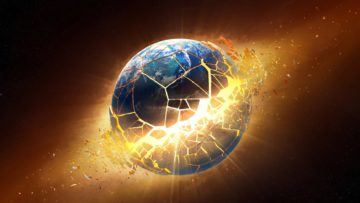 For my whole life, the world has been ending. For various alleged reasons. . . but always there’s been an overhang of dread and fear, the end times already here, human cussedness and sinfulness and greed at work in every moment, everywhere, eating away at what’s left of goodness and preparing the Day of Wrath, the horror, the tribulation, the Last Conflict, the End.
For my whole life, the world has been ending. For various alleged reasons. . . but always there’s been an overhang of dread and fear, the end times already here, human cussedness and sinfulness and greed at work in every moment, everywhere, eating away at what’s left of goodness and preparing the Day of Wrath, the horror, the tribulation, the Last Conflict, the End.
The “end times” got preached regularly from our Baptist pulpit, and during the summer a traveling evangelist would offer several days of extra-scary sermons, whoo boy, could that guy paint a picture! And we’d get scared all over again.
And yet, somehow, all of the various Beasts and Final Battles have failed to materialize. The Late Great Planet Earth spins forward in its usual way, bestselling doomsters notwithstanding, and lo, now I have arrived at my seventy-first year in this cavalcade of dread. Intact. Unscathed. Or anyway only mildly scathed. It’s been prediction, prediction, prediction. . . then nothing.
Funny how that happens.
(It happened even to Saint Paul, who wrote, some time in the first century A.D., “we shall not all sleep but we shall all be changed,” which meant he apparently expected the Second Coming before all of his contemporaries had died. That soon! Except, oops… here we are two thousand years later.)
Yet the updated global overview of climate change, the “Sixth Assessment Report” of the IPCC (the UN’s Intergovernmental Panel on Climate Change), released in August, makes it clear that we really are on a course of doom. Actual global warming. Happening now. And getting worse. How long do you expect to live? Whatever you imagine your last year on the planet to be – it will be worse than now. Much worse. Maybe catastrophically so. You might be sorry you lived long enough to see it.
I say this without irony or evasion: We can see it from here. It’s scary as hell. It’s happening.
Under this overhang of dread, what is there to do beside wait passively for the worst? What would hopefulness even look like?
* * *
In the nineteen fifties and sixties, my kind of evangelical thought the European Common Market was probably the Beast with Seven Heads so luridly described in the Book of Revelations. This despite the fact that Martin Luther himself had concluded that the Beast was actually the Roman Catholic church (the seven hills of Rome! QED!!).
Later we were told, without any embarrassment, Wait, no, the Beast is the Soviet Union.
Or else the UN.
Always with such confidence. Fiery confidence, to awaken fear and piety and, oh I don’t know, contributions? Obedience? I’m sure at least some of the preachers were sincere.
At each stage, each new interpretation, I would wonder – doesn’t anyone else remember? The same congregation would hear the rejiggered prophecies without any apparent resistance. The banty-rooster preachers would preach. The followers would follow and weep and say “Amen.”
Perhaps it was all easy to believe because in fact we were living under the continuous emergency of the atomic bomb. Those rascal Russians could end the world in about twelve minutes, it seemed. (So could we.) And then in 1962, with Kennedy facing off against Khrushchev over Russian missiles in Cuba, it felt just that close to happening. Very damn scary. The nuclear-missile apocalypse. We had trained for it (under our grade-school desks) and dreaded it (the terrible wailing reminder of monthly air-raid siren testing) for literally my entire life. Our era summed itself up: “The Age of Anxiety.”
Soon after that, we took a break for a decade or so while boys my age were allowed to fear something more immediate – being forced to carry an M16 in some southeast-Asian jungle, and either blow some poor sap to smithereens, or else be so blown, oneself. This awfulness occupied my late teens and early twenties pretty vividly. But only as a sort of deep under-dread. I got student deferments (white middle-class privilege), then an outstandingly high draft-lottery number (dumb luck). Meanwhile I had other dreads closer to the surface. Was I really saved? Why didn’t I like girls? What happens if I’m found out? Am I going straight to hell? It was like a fun layer cake, one kind of fear on top of another.
I wasn’t actually afraid of hell – that seemed absurd to me, cartoony and morally incoherent. Though being actively hated by God – as I had heard reiterated year in and year out – that left a mark. I’m still a little weird, if you want the truth: burdens of dread are distorting to carry. They can bend you. They can break you.
In the nineteen eighties (the decade of my thirties) we discovered a different doom called “nuclear winter.” This was a novel rendering of the old atomic apocalypse, but with a climatic aftermath that would turn the world into a sort of snowy Lower Slobovia (as the cartoon strip had it), shifting global weather toward a general freeze. We worried that one for a while. I was an earnest young Quaker by that time, living in a rent-controlled one-bedroom apartment in lovely (and otherwise unaffordable) Santa Monica. I recall looking down the boulevard and across the palm trees and out towards the Pacific horizon, thinking: This is all going to blow. All of it. I felt sure our cheerfully ignorant actor-president would do something fatal and that would be it. A few missiles. Then fire. Then ice.
Let me stress: I really felt this and believed it – with a sullen, hopeless dread. What could we do with an America that preferred this fantasy president, this fake cowboy, this spinner of folksy nonsense?
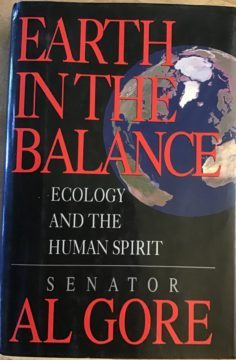 But a few years passed and this fear was replaced, once and for all, by global warming. By 1992 Al Gore’s big book Earth in the Balance had rung the bell for all of us to hear. I’ve just found the book on my shelves (I’m a book person. I mark them and think about them and then keep them by me . . . I guess right to the end.) Global warming is the master fear now. This fear is fact-based, measurable and clearly getting worse. It’s real. And we’re fearing it. Yet somehow, not fearing it enough to actually do much about it.
But a few years passed and this fear was replaced, once and for all, by global warming. By 1992 Al Gore’s big book Earth in the Balance had rung the bell for all of us to hear. I’ve just found the book on my shelves (I’m a book person. I mark them and think about them and then keep them by me . . . I guess right to the end.) Global warming is the master fear now. This fear is fact-based, measurable and clearly getting worse. It’s real. And we’re fearing it. Yet somehow, not fearing it enough to actually do much about it.
All these apocalypses. So many ways to live in dread.
To what end, I wonder. I guess that’s a pun.
* * *
The alternative to living in dread would seem to be living in hope. “Hope” sounds right but might mean a variety of things – including some fantasy-based and some merely forms of denial.
The Christians I grew up amongst believed fervently that Jesus and legions of angels would be appearing in the clouds any day now, and that their faith amounted to keeping a steely grip on this expectation: It will will be over soon.
This formulation does not motivate active work against any of the scary trends, obviously. Not many evangelicals are demonstrating against deforestation or advocating lower emissions. Why bother? Indeed, the recent evangelical embrace of the Trump presidency had them supporting many Federal moves against amelioration of these very concerns. Backwards hope, I guess you could call it.
An alternative kind of hope is what calls itself “positivity” but is really just a refusal to engage with anything bad, scary, or in that sense negative. As former First Lady Barbara Bush said (on television!) “Why should we hear about body bags and death? I mean, it’s not relevant. So why should I waste my beautiful mind on something like that?” Just keeping it positive, you know.
This sort of thing is sometimes spoofed as “toxic positivity.” It’s a kind of rigidified mask of relentless cheeriness, detached from both actual life and actual feeling.
Most reasonable adults would probably try to find some more reality-oriented form of “hope” to live with (or to live on, I’d almost say). Here indeed is a more subtle question. How do rational people maintain their buoyancy, their élan, their access to joy – in the face of the often crushingly awful history of actual life?
And if there’s anything more crushing than the Sixth IPPC report, I’ve not seen it.
* * *
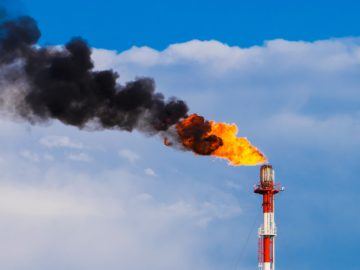 The Sixth IPCC report is huge and mostly too technical for non-specialists. So I have read the press release and rummaged around in the twenty-four page “Summary for Policymakers” (nicknamed “the SPM”)
The Sixth IPCC report is huge and mostly too technical for non-specialists. So I have read the press release and rummaged around in the twenty-four page “Summary for Policymakers” (nicknamed “the SPM”)
A few overarching themes emerge. One is that the confidence-level with which human behaviors can be named as the cause of global climate change is now quite high. “The role of human influence on the climate system is undisputed.”
But “The report also shows that human actions still have the potential to determine the future course of climate” (press release). The situation will respond to amelioration. If we care to try any.
For example, consider these assessments regarding projected sea-level rises (from the SPM) [emphases added]:
B.2 . . . Sea level will continue to rise well beyond 2100 (high confidence), and the magnitude and rate of this rise depend on future emission pathways. A slower rate of sea level rise enables greater opportunities for adaptation in the human and ecological systems of small islands, low-lying coastal areas and deltas (medium confidence).
B.2.1 Model-based projections of global mean sea level rise (relative to 1986–2005) suggest an indicative range of 0.26 to 0.77 m by 2100 for 1.5°C of global warming, 0.1 m (0.04–0.16 m) less than for a global warming of 2°C (medium confidence). A reduction of 0.1 m in global sea level rise implies that up to 10 million fewer people would be exposed to related risks, based on population in the year 2010 and assuming no adaptation (medium confidence).
B.2.2 Sea level rise will continue beyond 2100 even if global warming is limited to 1.5°C in the 21st century (high confidence). Marine ice sheet instability in Antarctica and/or irreversible loss of the Greenland ice sheet could result in multi-metre rise in sea level over hundreds to thousands of years. These instabilities could be triggered at around 1.5°C to 2°C of global warming (medium confidence).
The report offers grounds for hope, and also for dread. In these excerpts it can be seen, for instance, that one-half degree less temperature rise globally would mean that ten million fewer people would be dislocated by higher sea levels! Increments of improvement clearly matter. Though the rest of the many tens of millions of displaced people would still face lives of permanent upheaval.
And larger catastrophe also looms. Losing all or most of the the ice-sheets of Antarctica or Greenland would result in meters of added sea-level rise: damage and dislocation at a literally unimaginable scale.
* * *
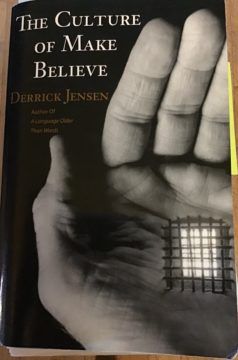 One alternative to that feeling of dread and hopelessness is (paradoxically) to stop expecting to feel “hope” at all. Giving up on hope is the angle taken by Derrick Jensen, a ferocious advocate for the environment. In his books The Culture of Make Believe and Endgame, he strips the cultural pretenses away, in order to awaken a sadder but wiser warrior who doesn’t need the assistance of false hope.
One alternative to that feeling of dread and hopelessness is (paradoxically) to stop expecting to feel “hope” at all. Giving up on hope is the angle taken by Derrick Jensen, a ferocious advocate for the environment. In his books The Culture of Make Believe and Endgame, he strips the cultural pretenses away, in order to awaken a sadder but wiser warrior who doesn’t need the assistance of false hope.
A wonderful thing happens when you give up on hope, which is that you realize you never needed it in the first place.You realize that giving up on hope didn’t kill you, nor did it make you less effective. In fact it made you more effective, because you ceased relying on someone or something else to solve your problems—you ceased hoping your problems somehow get solved, through the magical assistance of God, the Great Mother, the Sierra Club, valiant tree-sitters, brave salmon, or even the Earth itself—and you just began doing what’s necessary to solve your problems yourself. . . .
When you give up on hope, something even better happens than it not killing you, which is that it kills you. You die. And there’s a wonderful thing about being dead, which is that once you’re dead they—those in power—cannot really touch you anymore. Not through promises, not through threats, not through violence itself. Once you’re dead in this way, you can still sing, you can still dance, you can still make love, you can still fight like hell—you can still live because you are still alive, in fact more alive than ever before—but those in power no longer have a hold on you.
* * *
Not sure I was ready to give up in this particular way, I felt the need to get some perspective. So I set up a talk with my friend and fellow writer (and beer-buddy) whose work is really an institutionalized kind of hope. Let’s call him “Seth” – in storytelling terms, Adam’s youngest son and therefore, perennial kin to optimism.
In the real world Seth is a fisheries scientist who works closely with Columbia River Native-American tribes towards restoring and maintaining healthy rivers in the gigantic basin of the Columbia River (“an area the size of France!”). You can read more about it on their website.
So I asked Seth, “How do you do it? How do you maintain your enthusiasm – your hope – as the climate worsens and good outcomes become ever more unlikely? How do you even go to work every day?”
A pause ensued. I think there may have been some beer poured into this pause. It was a phone consult, so I’m only half sure (“medium confidence”).
“To some extent, I’m desensitized,” he said. He ventured that a “healthy callousness” might be part of the job, perhaps like what emergency room doctors must armor themselves with. “We make funky little jokes about the ‘crapitat,’ ” meaning the degraded habitat that those unfortunate fish are supposed to be returning to. When we talked, Seth and his team had just finished their summer’s work, which involves various kinds of measuring and monitoring along some of the major tributaries of the Columbia. He’s known to don a “dry suit” and snorkel long stretches of river, calling out data to his somewhat less damp research partner. Recently, they have also been using a beautiful, noisy six-prop drone mounted with multiple sensors. He reports that they’re all “really stoked” about this upgrade. (I’m not sure he actually said “stoked” – I have a way of attributing a kind of surfer swagger to Seth, because I admire his work and deeply envy his summers in, on, and alongside the fabulous rivers of the Pacific northwest.)
We chewed on that for a while – the way he and his team just do the work – regardless of the feelings that might be there if they overthought it. Are the rivers in good shape? Not with all those dams in the way – four huge hydroelectric dams on the Columbia itself, and some sixty (!) on the watershed overall. But are the rivers doing better than they would have been, without the interventions of the tribes? Oh, definitely. Some of the rivers are far, far more healthy now than a few decades back, when uncontrolled logging and fishing were wreaking havoc.
Something was gained. Not everything, certainly. Enough? Who knows.
* * *
Seth went a little further in complicating his sense of hope. He reminded me that all the work of restoring Columbia River tributaries is funded by “mitigation money” from the big hydroelectric dams – Bonneville and the others. Then he asked, “Can the rivers become healthy for salmon without removal of dams? Probably not.”
That’s the irony built into their work. Those salmon-killing dams make money selling electricity, then pay some of it back into the river system in turn. The root problem goes unsolved. Yet the money does help Seth and the others make the rivers . . . not healthy . . . but healthier.
Seth’s bottom line: this isn’t perfect, but it is still intrinsically worth doing. Whatever future we may face, because of the work of the tribes these rivers will be in better shape.
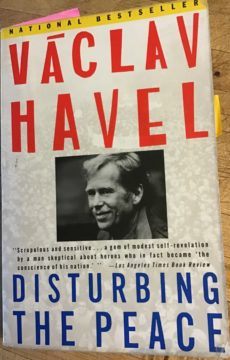 As our conversation ended, Seth called out the name of Václav Havel – the Czech playwright jailed for his opposition to communist censorship, who later became the president of the newly created Czech Republic. “It’s the kind of hope Havel talks about,” he said. He and I share an enthusiasm for this thinker, most especially for his famous essay “The Power of the Powerless.”
As our conversation ended, Seth called out the name of Václav Havel – the Czech playwright jailed for his opposition to communist censorship, who later became the president of the newly created Czech Republic. “It’s the kind of hope Havel talks about,” he said. He and I share an enthusiasm for this thinker, most especially for his famous essay “The Power of the Powerless.”
More than most of us, Havel understands taking action even in the face of hopeless odds. And his conclusion is this (from his later book Disturbing the Peace):
“Hope, in this deep and powerful sense, is not the same as joy that things are going well, or willingness to invest in enterprises that are obviously headed for early success, but, rather, an ability to work for something because it is good, not just because it stands a chance to succeed. . . . Hope is definitely not the same thing as optimism. It is not the conviction that something will turn out well, but the certainty that something makes sense, regardless of how it turns out.”
My own summary, after a few years of wrestling with this: Make hope a practice, not a feeling.
* * *
It seems that Havel’s kind of hope-stripped-of-sentiment, his action based on principle, circles around to being something close to Jensen’s hope-given-up. It’s a quiet center, out of reach of transitory feelings. A commitment. A path.
From this place I can see the point I was aiming at in the opener, about all those prophesied futures we were so certain about . . . which never came to pass.
We need to avoid a false certainty about our next future, too. Though we know for sure that global warming is coming and in fact is already upon us, we do not know exactly how it will play out. We will influence it in ways big and small. But its course will be full of surprises. That I am sure of: no one can say where the million-handed play of action and reaction will end up. No one can say where we will be lucky, and where we will have to deal with awfulness.
I know better than to foreclose the future, either with fear or with false hope. This much I will predict, though: it will be worse than we can imagine, and yet better than we deserve. All we can do is to keep on trying to do the right thing.
* * *
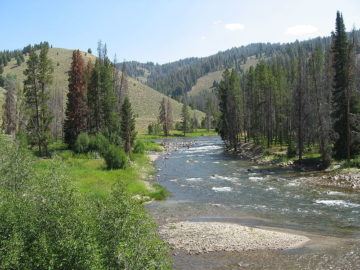
Lookinggglass Creek is a tributary of the Snake/Columbia River system out in the dry, forested lands of eastern Oregon. It has a checkered past, first fished out, then the scene of a hatchery that, alas like all hatcheries, had the effect of replacing its native fish population (chinook salmon) with dull-witted “farm” fish. Dumbing down the rivers, you could say, like trading in a herd of wild buffalos for a field of inert mooing herefords.
After some false starts, a program was started not to replace the missing fish – the unique run of spring chinook was gone forever – but to fashion a new run of native, fully local chinook salmon:
In 2001 the tribe reintroduced juveniles produced from a recently established Catherine Creek stock, a nearby Grande Ronde River tributary. In 2004 the first year that adults from the new Catherine Creek stock returned to the basin and passage of fish upstream was again permitted.
Beginning in 2007, the first adult progeny from natural spawning of the 2004 broodyear fish returned. Supplementation of the new population continues—using a mix of natural- and hatchery origin broodfish—with the intent of promoting the creation of a naturalized Lookingglass stock.
This robust intervention feels like hope to me. Feels like action in the world that accepts loss but also understands the underlying vitality of natural systems. Rivers out here are resilient – they’ve withstood volcanic batterings and climate swings for millions of years! (Indeed everything alive is a palimpsest of some similarly long history of stress and adaptation.)
The results: “for the first time in decades, returns to Lookingglass Creek were strong enough in spring 2011 and 2012 to allow tribal and sport fisheries. The run size in 2012 was estimated at 1,700 fish, roughly the same as seen historically.”
Sometimes my fellow environmentalists are prone to a sentimentalized notion of nature as a fragile, trembling object, ready to shatter at the slightest blow. But the underlying reality is one of survival against the odds.
Perhaps Lookingglass Creek can mirror to us something about our future, can show us a version of ourselves that is full of tough resourcefulness. A future of suitably callused hands, working with nature to shape better outcomes. Something lost, something gained.
When I say “hope” and think about the dreadful future that awaits us – an overheated climate that will kill many humans and destroy many ecosystems – the only meaningful sense I can bring to the word is this hard-handed determination to partner with nature and bring forth new kinds of abundance. Even while the drumbeat of destruction goes on.
To save what can be saved, and adapt creatively with what’s left.
What I don’t want to do is foreclose the future, as if I already knew the outcomes. I don’t. Neither do you. What is coming will be different than any of us can predict. For better, and for worse.
Let’s drink to that.
